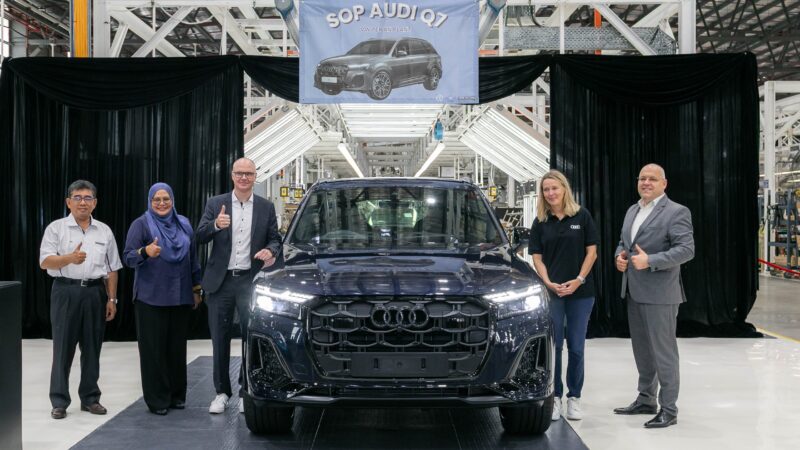Audi Malaysia has recently started the assembly process for the Audi Q7 SUV model at its factory in Pekan, Pahang.
This means that the Audi Q7 is the only Audi model that is assembled locally for the Malaysian market and the Southeast Asian region.
According to Dr. Susanne Lehmann, Managing Director of Volkswagen Group Malaysia, “This achievement is not just about the launch; it symbolizes vision, partnership, innovation, and progress.”
“Customers will continue to enjoy the same experience of quality, performance, and luxury that Audi is known for—now made in Malaysia,” she added.
In addition to the Q7 model, the Pekan factory is also expected to assemble other Audi models, with a production capacity of around 5,000 units per year.
Over RM12 million in initial investment has been made to realize this vision, further strengthening Audi’s presence in the premium luxury vehicle segment in Malaysia.
Meanwhile, Denyu Bostandzhiev, Managing Director of PHS Automotive Malaysia, stated, “By assembling several key vehicles here, we can offer more competitive pricing and shorten delivery times for our customers.”
“With the increasing demand for D-segment SUVs, we believe this is the perfect time to add the locally assembled Q7 to our model lineup,” he explained.
The 2025 Audi Q7 is expected to be offered in the S line variant, with an estimated retail price ranging from RM469,000 to RM489,000.
It is a mild hybrid electric vehicle (MHEV) powered by a 3.0-liter V6 TFSI engine that produces 340 PS and 500 Nm of torque, paired with an 8-speed Tiptronic transmission and quattro all-wheel drive system.
Acceleration from 0 to 100 km/h is achieved in just 5.6 seconds, before reaching a top speed of 250 km/h.
